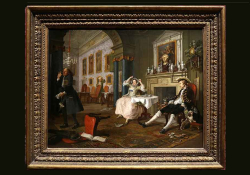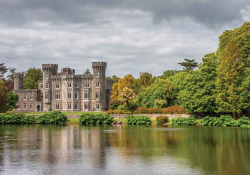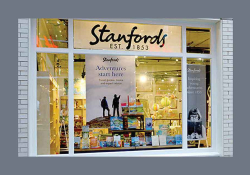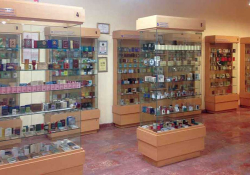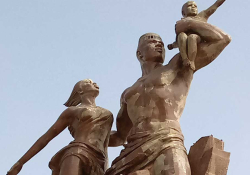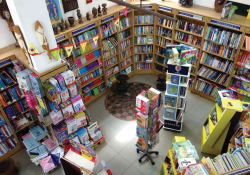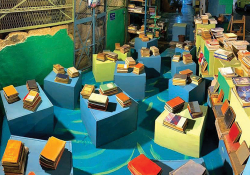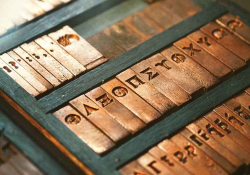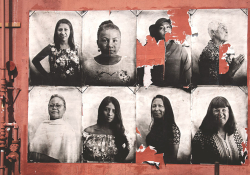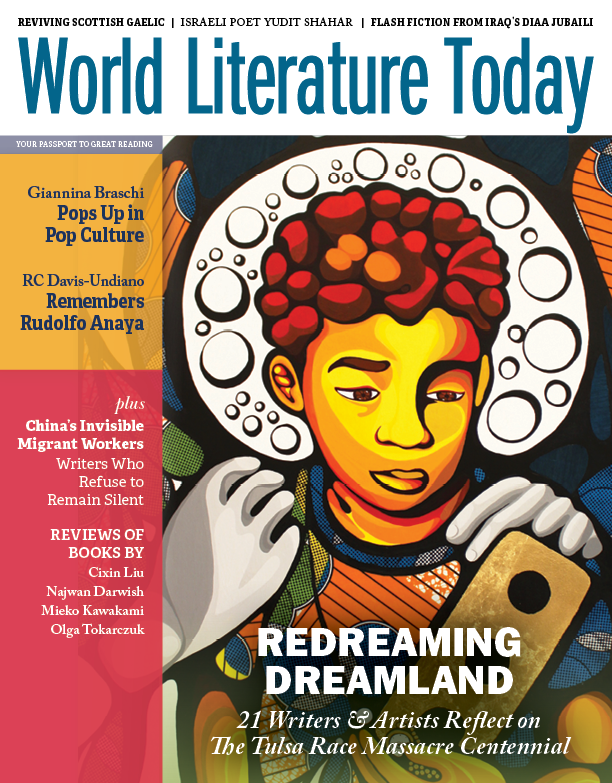Speaking in Tongues
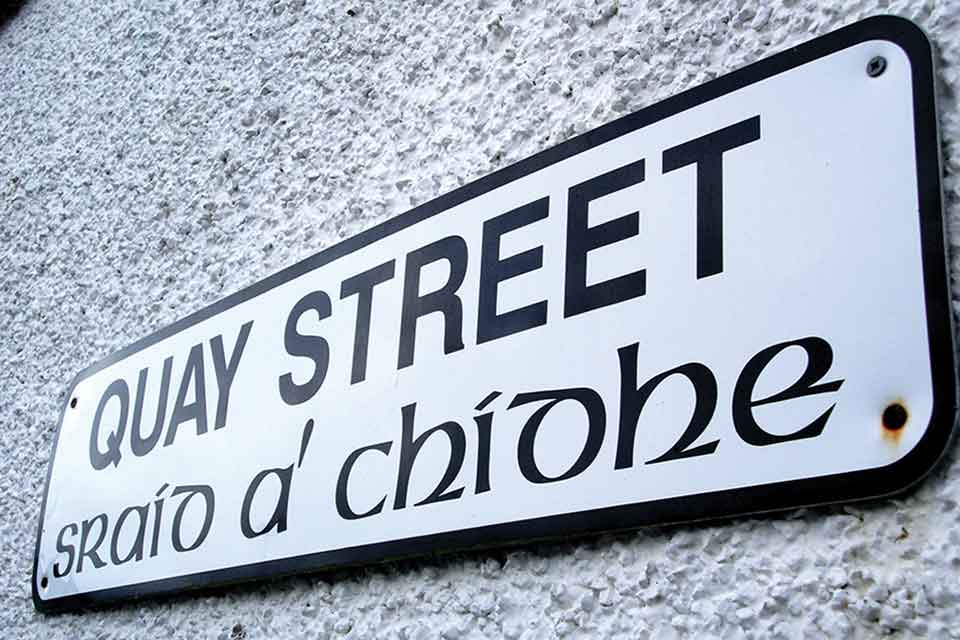
A writer with Scottish ancestry traces the life of Scottish Gaelic and assesses the current state of this “intangible heritage” now placed at the center of a culture-versus-race debate.
It was in a shop on the Hebridean island of Berneray that I first heard it. Standing between the oatcakes and smoked salmon were two women, chatting warmly in their garbled speech. I had been in Scotland for months but, living and working in Glasgow, not understanding a word had become habitual. From out the midst of that city’s mauling twang, I’d begun to resemble my centenarian grandmother, leading with my ear and squinting with the effort of comprehension. On Berneray, I had no chance of eavesdropping on the women; theirs was the cipher of Scottish Gaelic. It was near Berneray where English writer and dictionary author Samuel Johnson, during his 1775 voyage to Scotland, cemented Scottish Gaelic’s reputation as “the rude speech of a barbarous people.” In this, he was fantastically mistaken. There was nothing harsh or barbarous about these women. Their voices were lilting and light, with a touch of slosh, as though they had both just left the dentist and were working through the novocaine together.
Johnson is now infamous in Scotland for his Gaelic-bashing, and his adamance that it had never been a written language. In this, too, he was wrong: in 1760 Scottish poet James Macpherson garnered praise and worldwide renown for his discovery and translation of the poems of Ossian, the Gael’s epic-penning Homer-figure. Ossian enthusiasts included Thomas Jefferson and Goethe, who, so taken by Ossian, taught himself Gaelic so that he might translate more of his work into German.
Beyond sparking an interest in Gaelic culture, the spread of Ossian’s work marked the beginning of an assertive nationalism in which successive European peoples, during the so-called Age of Revolution, demanded not only their national independence but their national language and literature, too. Johnson wasn’t ignorant of Ossian and knew well the legitimizing effects a national literature would have on Gaelic culture. Highland uprisings were still a risk to the British kingdom, only united since 1707, and British Unionists were eager to shift Highland culture away from their history of clans and crofting. Thus began the violent and systematic Highland Clearances (Fuadaichean nan Gàidheal, or Eradication of the Gaels, to those at the sharp end), which did not end until Scotland was more sheep than people.
Gaelic was outlawed and suppressed well into the nineteenth century.
Pushed to the western fringes of Scotland (and to Canada, where Scottish Gaelic still survives), today’s dearth of Gaelic speakers seems less a coincidence of history and more the success of a pointed cultural shift by Scotland’s ruling majority. Gaelic was outlawed and suppressed well into the nineteenth century. In his memoir Memories of Rannoch, written in 1925, James Robertson recalled a time some seventy years previous when children in one of the many busy primary schools of Rannoch who had been caught speaking Gaelic in class were forced to wear a chain around their neck to which a human skull was attached.
Still, there are Scottish Gaelic words that worked their way into the English lexicon. There is galore, and shindig, and pet, which are charming; and there is trousers, which is baffling. And then there is plaid, bog, cèilidh, and whisky, which together form the foreigner’s rough estimation of Scotland.
Traveling through that country, I often wondered who the real natives were. It is a small country, but in every place, there seemed to be a different take on what it meant to belong. I met urbanized Scots eager to join with refined Europe and put the kilt-and-bagpipe label behind them. Then, I met a man on the Isle of Rûm ferry, who said to me, “If you’re wondering, I’m not Scottish. I’m Gaelic.” In the Highlands, some locals considered their presence the only thing keeping the pedigreed foreigners (English, Danish, and Malaysian billionaires among them) from expanding the bounds of their already considerable estates. Some of those estate owners, born in Scotland but educated at Eton and Oxford (with accents to match), considered themselves—and their affection for Westminster—the only thing keeping the increasingly fragile United Kingdom together. But as far away as London politics feel in Edinburgh, so too does Scotland’s capital from the Gàidhealtachd, Gaelic’s cultural ambit.
Today, the Outer Hebrides (Na h-Eileanan Siar) is the nation’s stronghold of the language, with eleven thousand of the nation’s fifty thousand speakers. Still, even there, in the bastion of the Gàidhealtachd, only just under half the population speak the language as their cradle-tongue, an amount that puts it on the cusp of inaudibility. Move south and east across the country, and the language ebbs even further, becoming vague and imprecise. I asked an Edinburger if she spoke Gaelic. She bashfully see-sawed her hand. “I know ‘Co às a tha thu?’ she said. “That’s ‘How are you?’”
Though it isn’t quite; the greeting “Co às a tha thu?” more directly translates to “Where are you from?”—a sharpening of the older “From whom do you come?” Both signify a time when surnames denoted clan, and clan implied geography.
The Scots who still maintain that level of connection with the land—and often with the Gaelic language—are crofters, the small-scale, generationally tenanted farmers dotting the Gàidhealtachd. Gaelic poet Iain Crichton Smith, in his memoir Towards the Human, surmised that “for the islander to lose his language . . . would be to lose to a great extent the meaning of his life, and to become a member of a sordid colony on the edge of an imperialist world.” In an extrapolation of that sentiment, the Scottish Crofting Federation has called for the national government to recognize Scotland’s thirteen thousand crofters as indigenous to the country. Drawing parallels between themselves and Scandinavia’s Sami people, the SCF suggests that not only should the crofters be recognized as indigenous but given the power to govern themselves through their own parliament, and have their own national language. Something so drastic is highly unlikely but displays the continued marginalization felt by these small, nonconforming groups.
There is Scottish Gaelic, but also Scots (aka Lallans), which itself is distinct from Doric, Orcadian, or Shetlandian, and different again from Ulster Scots (aka Ullans), and from Scottish English and Highland English. This crowding along the line of dialect and language has drawn any language that isn’t English into a fracas for funding and recognition.
Where Gaelic’s recognition differs is the underlay of mì-rùn mòr nan Gall—the indifference or outright hatred of the Scottish Gaelic language. While bilingual road signage (Inbhir Nis for Inverness, An t-Eilean Sgitheanach for Isle of Skye) gives the impression that the language is, if not thriving, then at least visible, anecdotal claims of confusion on the highway were enough for the Scottish government to launch an investigation into the effect of having Gaelic on road signs. There was none—only disgruntled bugbears about wasted money.
The Scottish parliament pours millions of pounds into Gaelic education, broadcast, and arts each year. Nearly 30 million GBP per annum have been allocated to Gaelic language programs since 2018, money some believe is disproportionate, given that only 1 percent of the nation’s population are sentient recipients of its benefit. The money argument is an easy one to make, as the remaining 99 percent see Scotland awash with social problems, where few benefits reach those on the lower rung of society’s woes, of which there are many (in the Glasgow suburb of Calton, for instance, the average life expectancy is a mere fifty-four years).
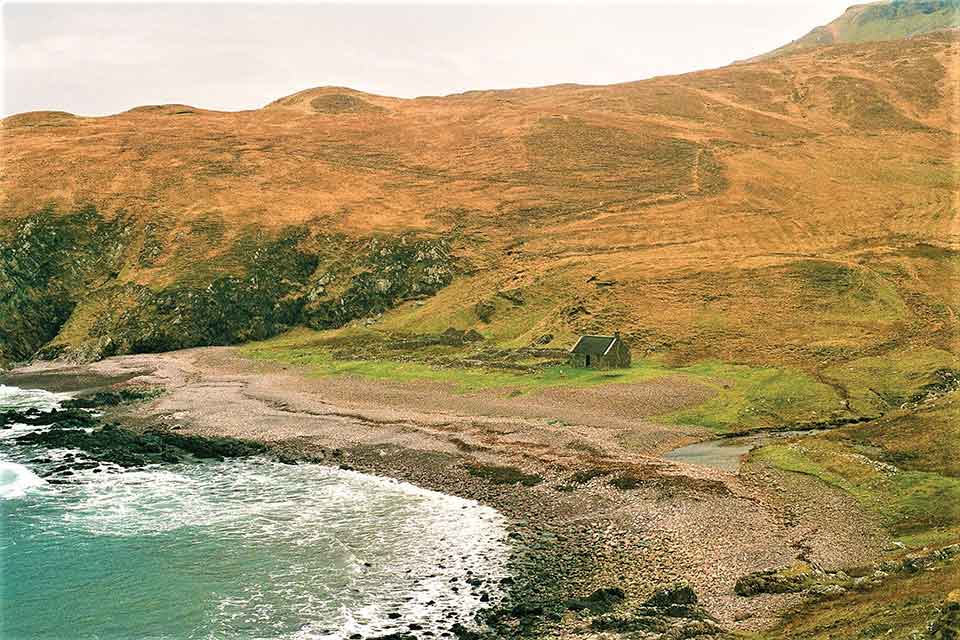
English is always there, biting at the heels of Gaelic, enticing the young away and into the verbal desert that dominating languages create.
Language is an intangible heritage, one entrenched firmly in identity. Rightly or wrongly, the Gaelic language has been placed at the center of a culture-versus-race debate. Crichton Smith spoke not only for Gaels when he wrote that “we are born inside a language and see everything from within its parameters; it is not we who make a language, it is the language that makes us.” Thus, for native Gaelic speakers, the spread of the language is a double-edged sword. Education in the language becomes a matter of identity and gets to the heart of who is a Gael. In class-conscious Britain, Gaelic schools are taken for middle-class luxury, the kind offering far more support to urban centers far from the Gàidhealtachd, and teaching non-Gaels the language is seen by some as counterproductive to maintaining the Gaelic culture.
To counter these snags, community organizations such as Urras na Gàidhlig are organizing to take Gaelic out of the classroom, so to speak, to create a language-in-society revitalization. “The Gaelic Crisis,” a 2020 pamphlet, points to island communities that were once strongholds but whose social use and transmission of Gaelic is now at the point of collapse due largely to external central-belt planning by the Scottish government and remote academics at the national level.
And what of today’s Gaelic literature? What are the prospects for carrying forward a tradition stretching back to Ossian? For writing the books so that Gaels can entertain and inform Gaels? To this end, there is the Gaelic Language Act, which ensures aid for writers and translators. In terms of literary output, there are many avenues, from grants to colleges, to monolingual literary magazines. Indeed, the literature is going through a revival, with some forty books published in Gaelic each year—no small number, bearing in mind that 100 percent of the Gaelic readership also reads English.
And English is always there, biting at the heels of Gaelic, enticing the young away and into the verbal desert that dominating languages create. Is the solution to negate English? To battle it through obstinance? For some, the detriment to professional exposure is worth the risk. Gaelic writer Mìcheal Bauer, for one, took the risk; his book Rònan is Ciorstag, written in Scottish Gaelic, can also be found in Irish Gaelic, and Manx, but not English.
Regardless of how they are learned, languages survive through use rather than exposure. The language must breathe, it must exist for itself.
There is hope of progress. Inclusion of Scottish Gaelic on online-learning apps has created a rising interest in learning the language, although it has yet to add to the Gàidhealtachd in any meaningful way. That requires people and commitment to a culture that becomes evermore insulated. When I heard those Gaelic tones on Berneray, it didn’t evoke the ardor of my ancestors. It simply made me happy to know those beautiful sounds were still being made—and understood—where they belong. Regardless of how they are learned, languages survive through use rather than exposure. Gaelic is not a memory, or nostalgia, or a tourist trap. The language must breathe, it must exist for itself. Much of that existence is tied to feelings of oppression; open historical wounds that bleed as though they were inflicted yesterday. The traits so often associated with Scotland—stubbornness, hardiness, honor—are the flame needed to cauterize that pain and, in doing so, keep Gaelic alive.
Gladstone, Manitoba

